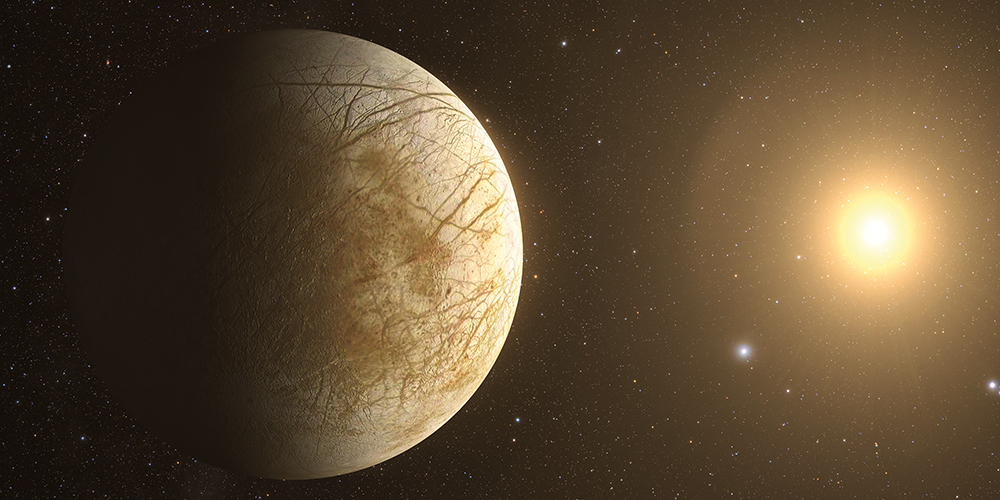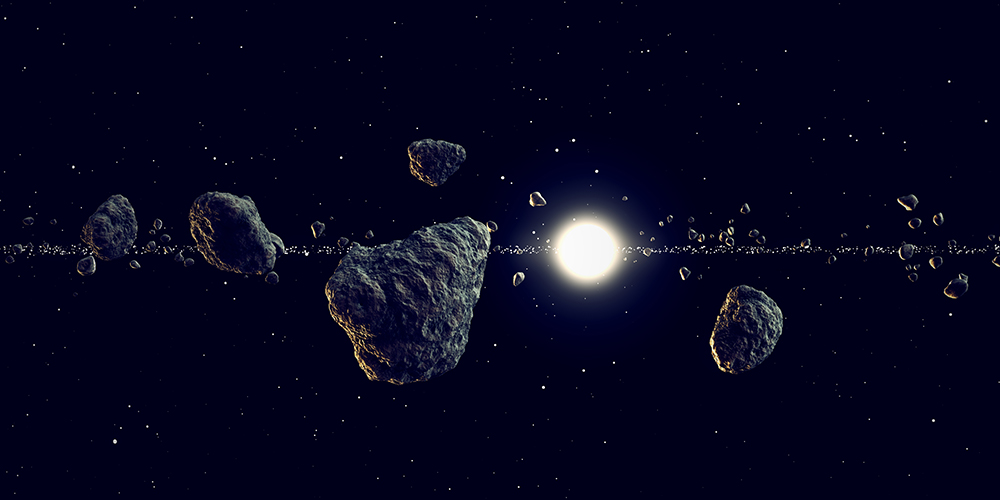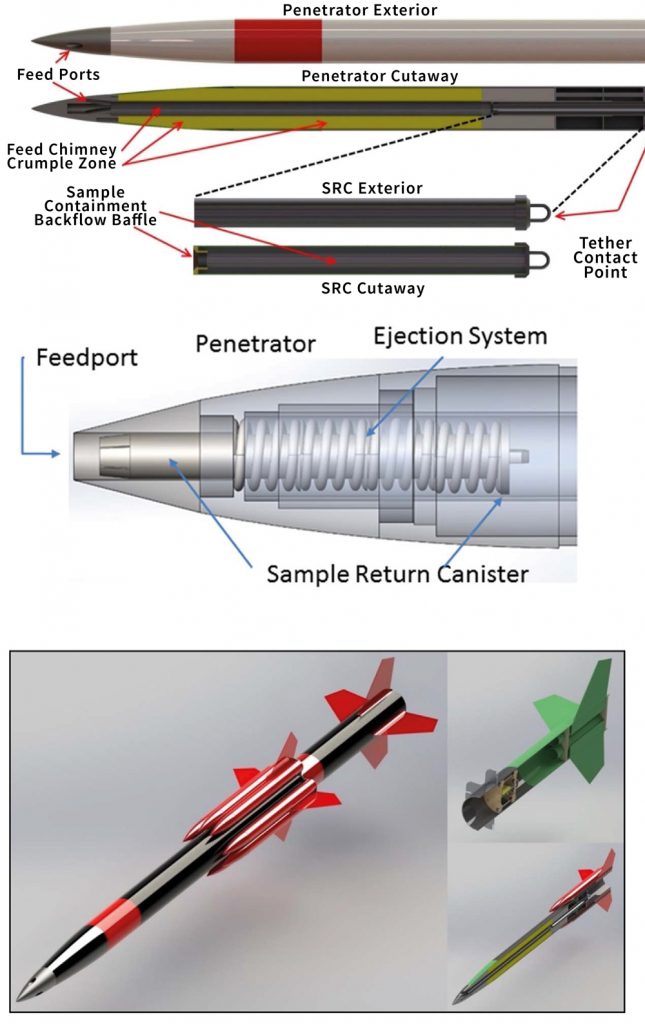Dr Robert Winglee – High Velocity Impacts: A New Way to Collect Samples from Space
For now, planetary scientists can only dream of getting their hands-on rock samples taken from the surfaces of distant worlds. Achieving these extractions presents a significant set of challenges, but Dr Robert Winglee and his colleagues at the University of Washington have made significant strides towards developing feasible techniques for retrieving samples. Through detailed computer design and field experiments, they have now clearly demonstrated that obtaining core samples created during high-velocity impacts with planetary surfaces could one day be a reality.
Exploring Different Worlds
Over the last few decades, a diverse array of planets, moons and asteroids have been imaged in ever more intriguing ways. Photos gathered by the Curiosity rover on Mars have revealed a high-resolution, ground-level view of a completely alien landscape. New Horizons has provided us with detailed images of Pluto, at the icy fringes of the Solar System. Yet for all the achievements these missions have made, the goal of being able to readily attain a subsurface sample from the many different solar system objects remains elusive. Returning such samples to Earth for further analysis is even more elusive still.
With even the most generous of budgets, every probing mission ever launched has faced a trade-off between the inclusion of many different interesting experiments, and lower launch costs. Before a mission is launched, many different groups of scientists must ultimately battle it out to prove that the data their proposed experiments would collect will be more valuable to science than those of other groups’ experiments. Inevitably, such a highly competitive process means that many experiments must be abandoned. If samples could be returned to Earth, then more detailed analysis could be undertaken, greatly increasing the scientific return, especially towards understanding the solar system’s evolution and the potential for life beyond the Earth.

Extracting Samples
During the Apollo area, slightly more than 380 kilograms of rock were returned to Earth, providing the first direct evidence that the Moon was formed from a giant impact between Earth and another solar system object called Theia. Since the end of the Apollo era, only grams of material have been returned to the Earth from missions such as NASA’s Stardust and JAXA’s Hayabusa I.
One particularly desirable feat for scientists is to achieve the ability to collect samples from below a planetary body’s surface. The reason for this is that surface material has been modified by weathering processes, such as meteorite impacts and exposure to solar radiation. Reaching below the surface would provide pristine material that would offer insight into processes controlling the formation and evolution of the solar system.
However, the extraction of a subsurface samples is inherently difficult. Getting drilling equipment onto the surface of a planetary body is extremely expensive, while the zero-gravity conditions at asteroids and comets makes drilling impossible, unless additional mechanisms are developed to firmly attach the drilling equipment to the surface.
Another way to extract a core sample without the need for drilling equipment is to exploit the fact that all spacecraft tend to have substantial velocity relative to their target object. Indeed, braking thrusters need to be used to reach a stable orbit around the object. However, what if this energy could be harnessed instead to release a penetrator that would impact the surface at high speed.

High Velocity Core Samples
In their research, Dr Robert Winglee and his colleagues at the University of Washington have designed and tested an intriguing solution to the main challenges posed by sample extraction, in the form of a high-speed penetrator device, which is shaped like a giant hollow needle. On impact, the penetrator is buried to depths of several metres, as material is rapidly fed into a canister held inside, through ports in its steel nose cone. Travelling between 1000 and 2000 kilometres per hour (or about 10 times the speed of a car on a freeway), a significant difficulty is to ensure the penetrator survives such a high-speed impact.
The other difficulty is to get the core sample to be ejected from the impact site back into space when the penetrator itself is deeply embedded in the surface of the target. Dr Winglee’s group has solved this problem using an internal canister, which is pushed upwards by the reflected energy coming from the impact. When the canister reaches orbit, it is collected by the awaiting spacecraft through a mechanism like an electromagnet. The rock sample is then safely stored within the body of the spacecraft as it travels back to Earth – ready for detailed analysis on its return.
High-Impact Field Tests
To demonstrate the capabilities of this technology, Dr Winglee and his colleagues have tested their penetrator through both computer simulations, and field tests on Earth, in which penetrators are fired into the ground by rockets. The researchers have now carried out three rounds of these flight tests. The first of them demonstrated that even at supersonic impact speeds, the penetrator could survive its collision with the ground and remain mechanically intact.
The second series of tests demonstrated that core samples can indeed be collected by feeding them through the penetrator’s nose cone and into the return canister, again without damaging any of its inner parts, and with the sample being ejected back onto the surface for easy pickup. Finally, the third round of testing demonstrated that the sample-carrying return canister containing the electronics can survive the impact. The only element of Dr Winglee’s design that has not been tested in this way is the capture of the return canister once it reaches space – a test that would need to be carried out on far larger scales. All the same, the field tests clearly showed that high-impact sample extraction is a perfectly feasible prospect.

Studying the Solar System’s Moons
If you think trying to survive an impact at 2000 kilometres per hour is difficult, braking speeds of about 4 kilometres per second are needed to reach the surface of the Europa, one of the icy moons of Jupiter. This moon is a particularly enticing target, as NASA’s Galileo mission has recently revealed that a vast liquid ocean could be hidden beneath its icy surface. This ocean could also be heated by the significant tidal forces induced by its host planet – potentially creating a suitable environment for life to evolve.
Because Europa has no atmosphere, using a parachute system to land equipment is not possible. Access to the surface through a rocket landing is possible, but the projected cost is very high. This has been possible for lunar landers, because they only had to decelerate by 1 kilometre per second to reach the surface. For 4 kilometres per second, you have to carry a lot more fuel or the payload has to be substantially reduced.
Throwing Up a Snow Storm
To get around this issue, Dr Winglee and his colleagues propose a simple two-stage landing system, avoiding the need for expensive braking systems. The first stage would involve sending in a separate, initial impactor, shaped like a hollow cylinder. Travelling at hypersonic speeds, this object would penetrate to depths of around 10 metres, throwing up a temporary, cone-shaped cloud of ice and dust particles. The second stage – containing the payload – can then use this dense cloud as a passive braking system, which slows down its speed to ensure that its electronic components can survive.
Dr Winglee and his team have now tested this approach using computer simulations and undertaken a field test in Alaska in mid-winter. They found that if the initial stage has just the right shape, it can slow down the second stage as heavy as 10 kilograms to a safe impact velocity. Softening landings in this way could prove invaluable for a wide variety of space missions, and would be particularly useful for sample extraction. Direct analysis of the geology of the moons of the outer Solar System are likely still a long way off, but if realised, it would transform our understanding of how these worlds were formed, and how they have behaved since then.

A Promising Future
Through further research, the team’s proposed sample extraction techniques could one day open up the door to a diverse new range of studies in planetary science. For example, scientists would be better equipped to answer the question of why asteroids appear to join together through cohesive forces, which prevent them from breaking up. This process is thought to underly the formation of every planet, moon and asteroid orbiting the Sun, but for now, remains a mystery.
In addition, scientists would be able to investigate variations in the compositions of different moons and asteroids, solving further mysteries about the formation of the Solar System. For worlds such as Europa, where Galileo has already given us tantalising glimpses of organic molecules, any sample returned to Earth could aid our understanding of the origins of life. For now, Dr Winglee and his colleagues will continue to improve their extraction technique, with these ambitious goals in mind. In the coming years, they will focus on the mechanisms that spacecraft could use to retrieve sample-carrying canisters, without damaging their loads.
Reference
https://doi.org/10.33548/SCIENTIA412
Meet the researcher

Dr Robert M. Winglee
Department of Physics
University of Washington
Seattle, WA
USA
Dr Robert Winglee completed his PhD at the University of Sydney in 1985. He has worked at the University of Washington since 1993, where he is now the Director of the Washington NASA Space Grant Consortium, which aims to improve education in science, mathematics, and technology throughout the state. Dr Winglee’s main research interests include space plasma physics and engineering, particularly in relation to the environments around the planets of the Solar System. He also studies a variety of areas relating to the dynamics of other planets’ aurorae and magnetospheres, with the aim to study how they would interact with our spacecraft.
CONTACT
W: https://www.ess.washington.edu/people/profile.php?pid=winglee–robert
KEY COLLABORATORS
Mariah Danner, and the many talented undergraduates at the University of Washington who worked on the many different components of the project.
ACKNOWLEGEMENT
Dr Winglee is indebted to the Confederated Tribes of the Colville Reservation and the Ukpeaġvik Iñupiat for the use of their lands during the field testing performed between 2017 and 2019. This work was funded NASA’s Planetary Instrument Concepts for the Advancement of Solar System Observations under grant 16-PICASSO16-0003.
FURTHER READING
RM Winglee, T Robinson, M Danner, J Koch, Cryo-braking using penetrators for enhanced capabilities for the potential landing of payloads on icy solar system objects, Acta Astronautica, 2018, 144, 136–146.
RM Winglee, C Truitt, R Shibata, High velocity penetrators used a potential means for attaining core sample for airless solar system objects, Acta Astronautica, 2017, 137, 274–286.

Creative Commons Licence
(CC BY 4.0)
This work is licensed under a Creative Commons Attribution 4.0 International License. 
What does this mean?
Share: You can copy and redistribute the material in any medium or format
Adapt: You can change, and build upon the material for any purpose, even commercially.
Credit: You must give appropriate credit, provide a link to the license, and indicate if changes were made.
More articles you may like
Grandmothers: Innovation Through Tradition
Grandmother Project – Change through Culture (GMP) is an organisation dedicated to documenting the role of grandmothers and demonstrating the effectiveness of grandmother-inclusive strategies in improving the health and well-being of women, children, and adolescents. GMP’s groundbreaking work challenges conventional wisdom to transform community-based interventions in Africa and beyond, harnessing a powerful but often overlooked resource: the wisdom and influence of grandmothers.
Dr Robert Larkin | Cultivating Change to Improve Soil Health and Increase Potato Yield
Environmental quality and food production are facing the pressing challenges of climate change and global population growth. Dr Robert Larkin from the United States Department of Agriculture-Agricultural Research Service (USDA-ARS) and a team of plant scientists developed and tested a range of crop management systems to help overcome these compounding challenges. Their work is improving soil health and increasing the yield of potato crops, contributing to the future food security of nations.
Professor Giorgio Buttazzo | Artificial Intelligence and a Crossroads for Humanity
Where do we stand with artificial intelligence? Might machines take over our jobs? Can machines become conscious? Might we be harmed by robots? What is the future of humanity? Professor Giorgio Buttazzo of Scuola Superiore Sant’Anna is an expert in artificial intelligence and neural networks. In a recent publication, he provides considered insights into some of the most pressing questions surrounding artificial intelligence and humanity.
Dr Ralf Adam | New Technologies Shaping the Future of Oral Hygiene
Understanding the efficiency of various toothbrush technologies is essential for achieving optimal oral health. Dr Ralf Adam, who leads a dedicated team at Procter & Gamble in Germany, is keen to investigate the complexities of these technologies. His team have provided new insights into the best toothbrush types for plaque removal and the maintenance of gum health. By highlighting the importance of informed oral care decisions and ongoing investigations, this vital research works towards ensuring everyone can achieve a brighter, healthier smile.




